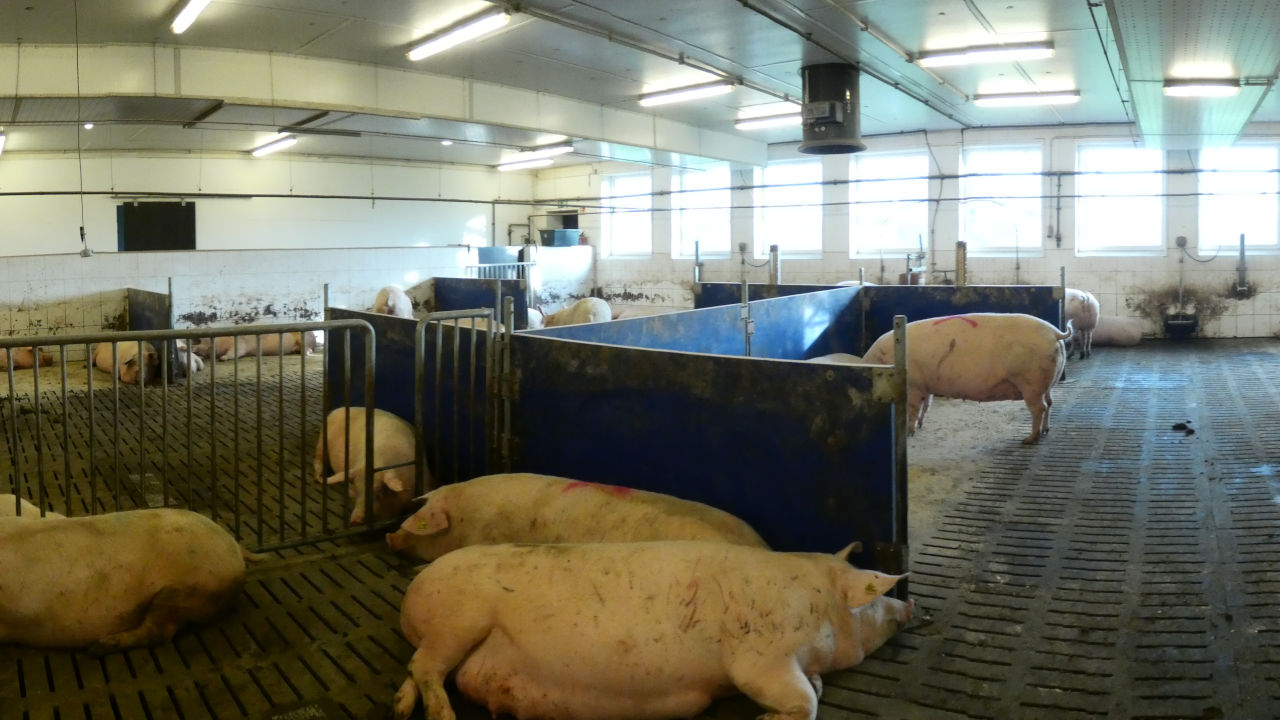Sow welfare during pregnancy increases when group-housing facilities and management practices consider more the behavioural and physiological needs of sows and do not force them to cope with stressful housing environments. For mixing of sows, e.g., research results suggest to use particular mixing pens in which sows should be kept for the first 2-3 days after mixing. These pens should allow the sows to achieve a flight distance of 10-12 m.
Guidance
In EURCAW-Pigs’ Review on group-housing and mixing of sows, suggestions for improved practices are provided for each of the four focus areas to enhance sow welfare when group-housed.
Mixing of unfamiliar animals
Other options to improve the welfare of sows around mixing, besides the use of mixing pens, include, e.g., provision of good quality flooring to prevent slipping and falling, and provision of escape opportunities. Sows should preferably be kept in static groups where they are mixed only once during gestation. Mixing sows at weaning or in the first week after insemination reduces the risk of embryo mortality and therefore smaller litter sizes.
Competition for resources
Reducing competition for resources may be done by, e.g., adequate access to resources in space (no narrow passageways or placement in corners) and time (permanent access to enrichment materials).
Electronic sow feeding, which is a localised resource and does not allow simultaneous feeding, should be positioned away from busy areas and other resources. Lying areas should be separate from the activity and dunging areas, and provide shelter and a view of the surroundings.
Restrictive feeding
The adverse consequences of restrictive feeding (hunger, stereotypies, frustration) may be mitigated by including including more fibre in the diet, allowing a larger volume of food without increasing the energy level and nutrient composition. Fibrous materials can be offered separately in readily accessible racks or on the floor. Providing both fibrous ingredients in the diet and ad libitum access to roughage is the most effective way to increase satiety.
Climatic and resting comfort
Climatic and resting comfort can be improved by clean, dry bedding (e.g. straw) or cushioning, e.g. using rubber mats to improve resting comfort and reduce leg and claw problems. Other measures include proper heat disposition (cooled air, floor cooling, misting and sprinkling systems, etc.), warm and cool surfaces for resting (e.g. a partly-slatted floor), and adjusted management (e.g. feeding and thermal control) during periods of hot weather.
See "Tools for welfare inspection" for a description of welfare indicators, helping to identify welfare issues.
Source photo: ©EURCAW-Pigs

